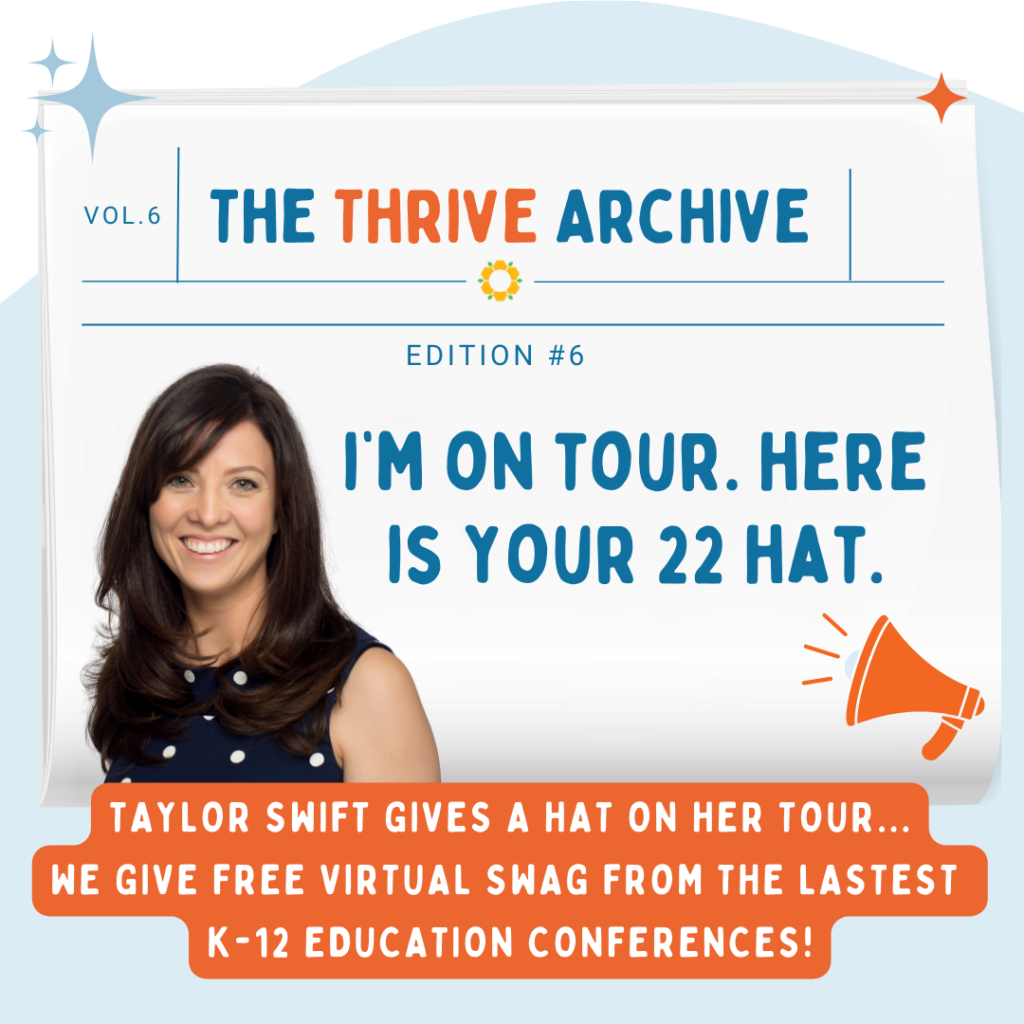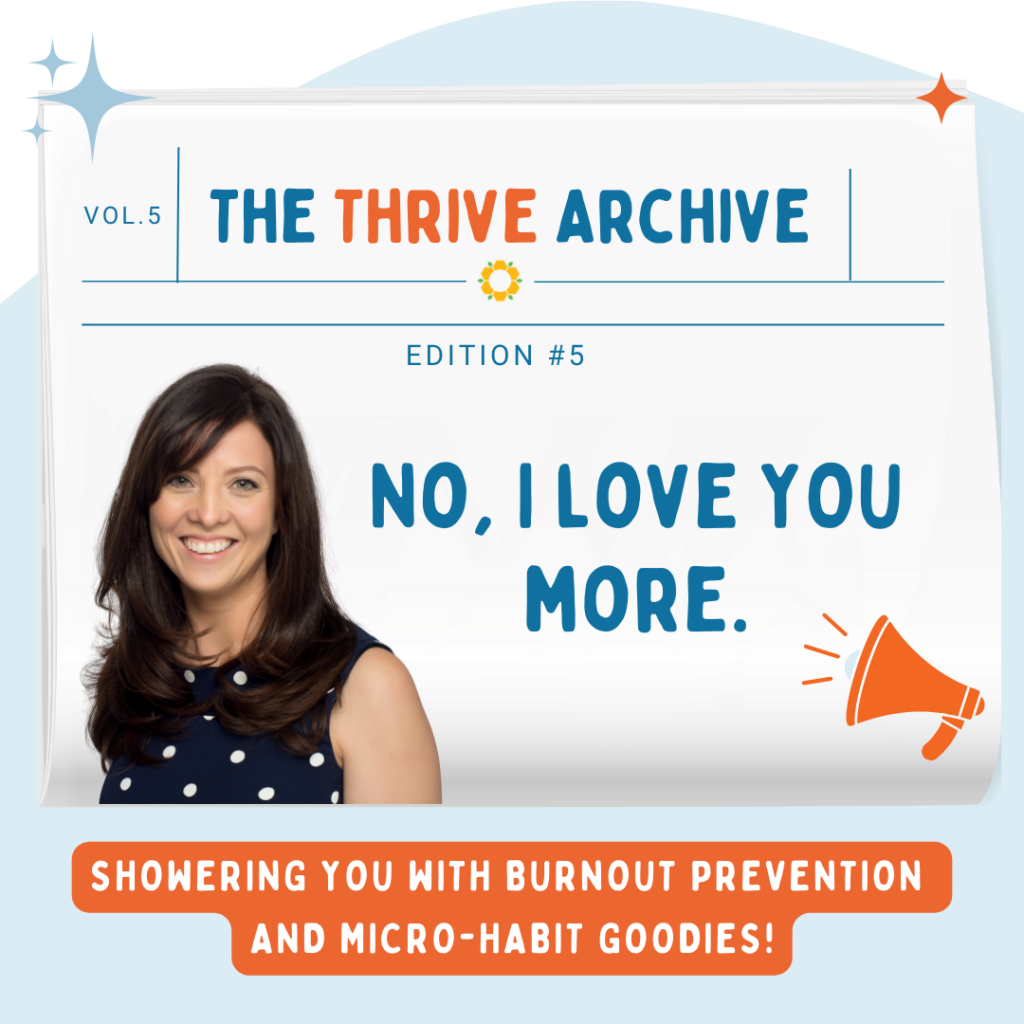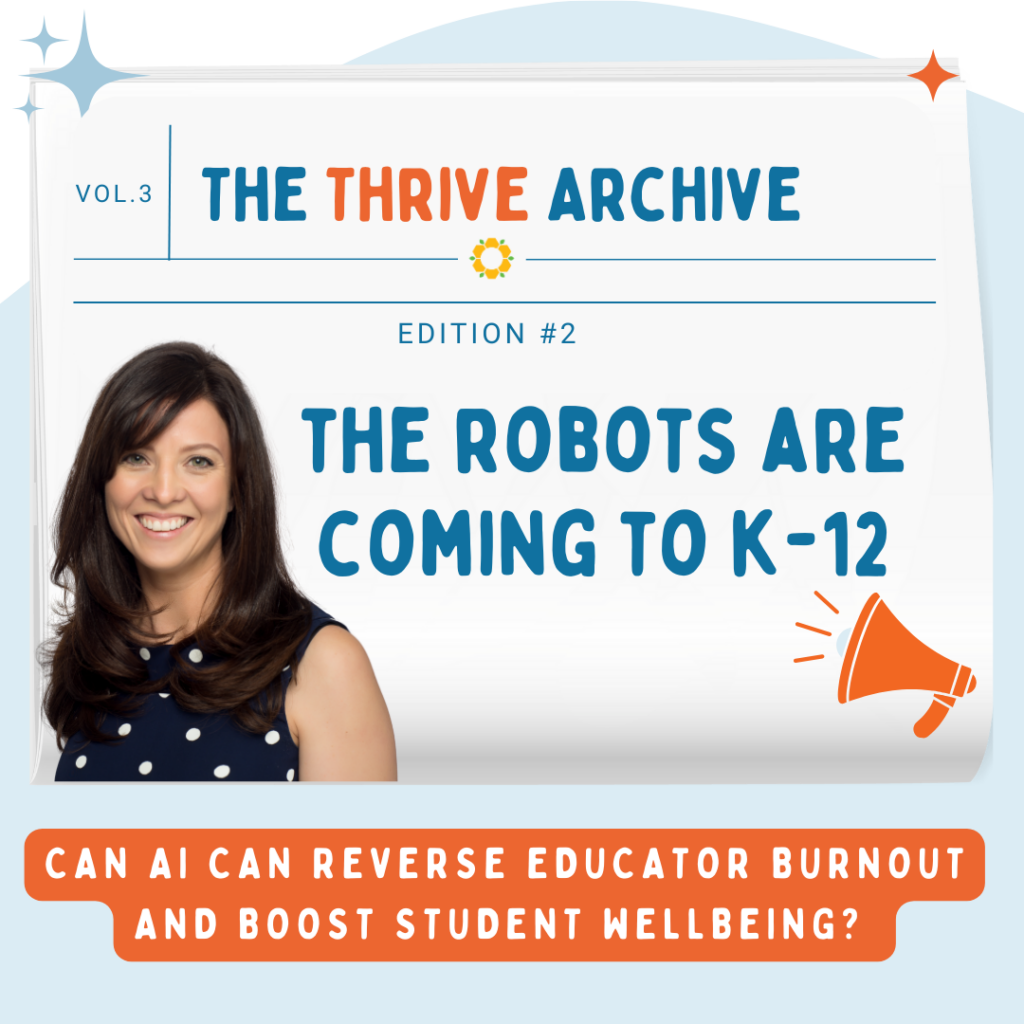- For School Psychologists, For Teachers, News
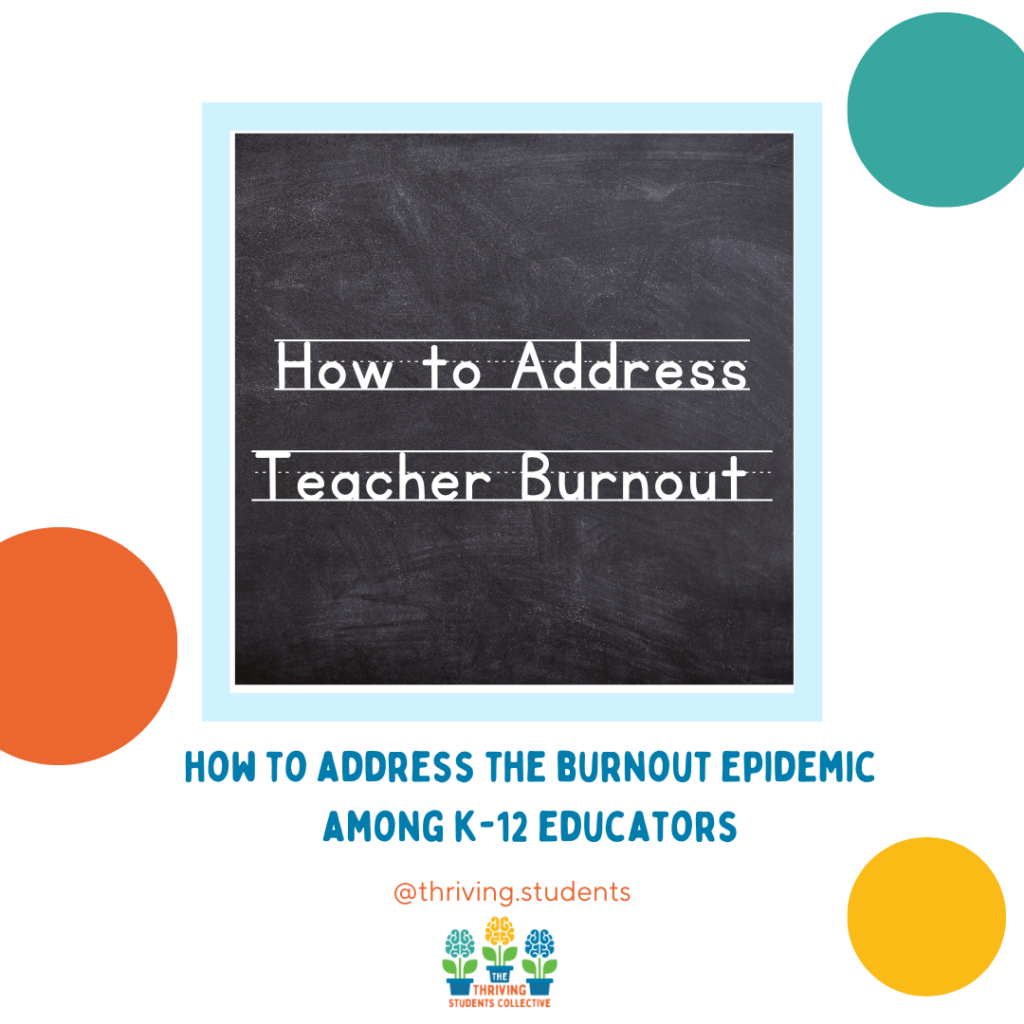
I’m a school psychologist who studies burnout, and I completely missed the signs of my own burnout.
I’ve been working in K-12 education as a school psychologist for over 20 years. Like many educators, I entered the profession because I’m passionate about enhancing students’ wellbeing, unlocking their strengths, and helping them reach their true potential.
What I didn’t realize until about 10 years in the profession was that I was burning my own wellbeing to the ground doing it.
Even at the height of my burnout (culminating in a moment when I was huddled under my desk, 6 months pregnant, with a gunman on campus), I still didn’t identify as “burned out.” If someone had asked me, “Are you burned out?” I would have said, “No, I’m just really tired and stressed.”
I thought burnout was someone who was “phoning it in” and didn’t care anymore. In contrast, I cared so much, I was working every night and weekend and would cry in my car during lunch at the heartbreaking stories my students shared with me about their struggles. I felt like I was putting out emotional fires all day long, and I wasn’t ever reaching kids with learning, behavior, and emotional challenges in time.
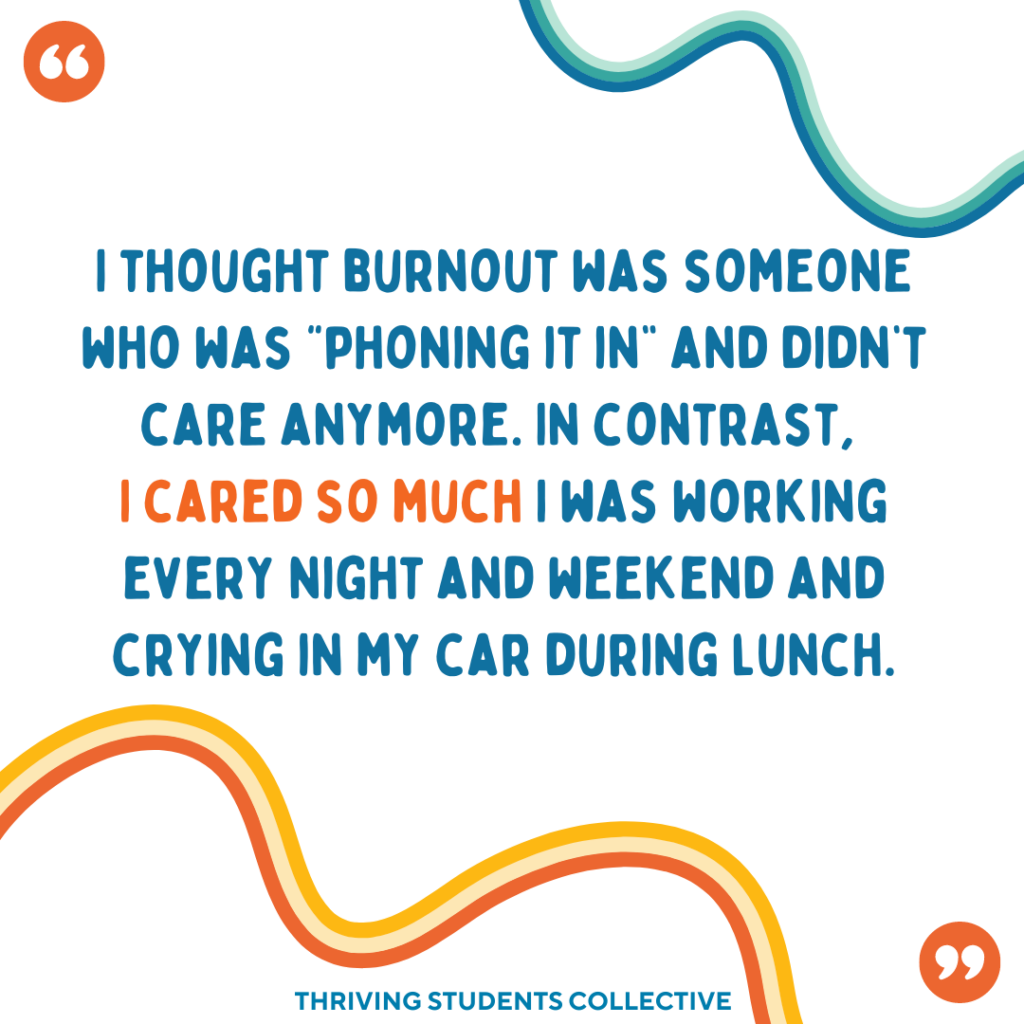
I thought the stress was just a part of the job I cared so much about. It was a package deal, right? I should just remember my “why” and soldier on! Or maybe try some self-care on Sunday!
But I soon learned that loving working with kids wasn’t enough. And I found there’s no weekend bubble bath soothing enough to escape the reality that I was a school psychologist with literally thousands of students on my caseload.
Burnout and educator turnover was here long before the pandemic. The pandemic just put gasoline on the burnout fire.
According to a recent poll by Gallup, K12 educators report the highest burnout rate of all US professions, which can lead to a decrease in job satisfaction, compromised mental health, and even physical illness.
We polled our 130 teachers in our Thriving Students Collective community and found that 43% reported they were likely to leave their district next year, and 29% reported they were likely to leave the profession altogether. The consensus as to why?
Teachers felt overwhelmed, frustrated, demoralized, and in “survival mode.” At the same time, they expressed deep caring for their students and a strong a desire to do more to help them.
Students’ needs are at an all time high, and emotional bandwidth is at an all time low.
We’ve learned from our community that teacher and mental health provider burnout in the schools is not the result of personal self-care fails. It’s the result of a grand canyon sized gap between educators’ positive vision for supporting students and the current reality of feeling exhausted and oftentimes under-resourced.
What We Can Do to Address Educator Burnout?
It’s pretty easy to get sucked into the quicksand of negativity and demoralization, but we don’t have to.
Most solutions focus on trying to fix what’s wrong with our school system by adding more to educators’ already full plates, like tasking them with doing more self-care after work. It’s high time we started focusing on what’s strong with our school system by leveraging our greatest asset we already have–our educators. This includes teachers, special educators, administrators, school psychologists, mental health providers, learning support staff, paraprofessionals, custodial staff, and food service workers–everyone in the school building who supports kids has the power to transform students’ lives.
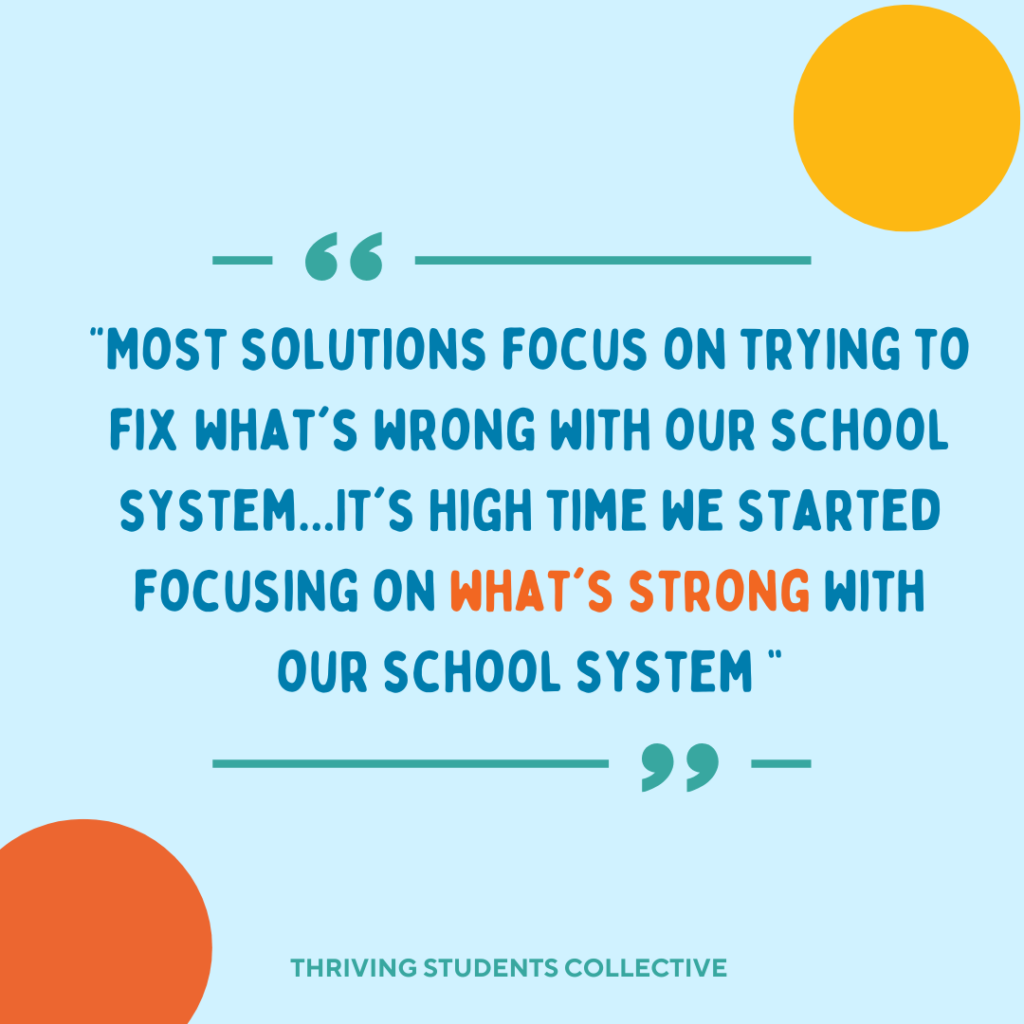
Here are the invisible dots we need to connect. Education efforts often operate in silos. Over here we have a wellness room for teachers. Over there we have a wellness initiative for kids. And we have academic interventions here, there and everywhere. But all these initiatives are connected, and educator wellness is the foundation for all initiatives. What good is a snappy new ed tech product or curriculum for students if our educators are too stressed to use it? Or worse, if they quit altogether?
And it’s not just keeping educators in the building, it’s about keeping them from showing up in survival mode, feeling burned out, emotionally exhausted, and demoralized (all of which lead to poorer student outcomes). It’s about helping them thrive. While having teachers with positive wellbeing is a worthy goal in and of itself, there are positive ripple effects: Research shows boosting teacher wellness boosts student achievement.
Research also shows that the number one protective factor for adverse childhood experiences and trauma is the presence of one caring adult. With 1 in 5 students having a learning or mental health challenge, keeping our teachers and mental health providers in the profession ensures our students get the care they need.
So how do we unlock our educators’ unique strengths? How do we foster resiliency and give tools for educators to not just survive, but truly thrive in their careers? We definitely need to look to system-wide efforts, such as increased pay, smaller class sizes and caseloads, and educational reforms that address the “upstream” challenges that cause the stress.
But in the meantime, what can we do when we have to show up on Monday?
Introducing the Thrive-o-gram
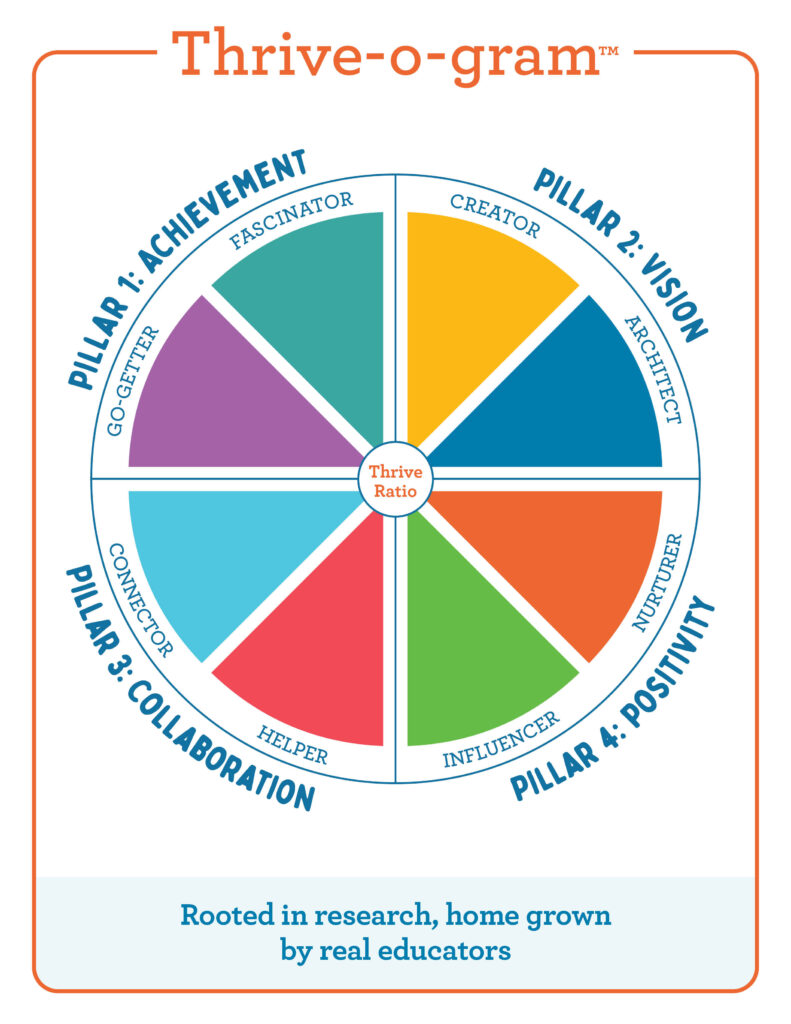
I’ve been studying burnout in K12 education since 2011, when I authored The School Psychologist’s Survival Guide. Since 2017, I’ve been working with school psychologists in The Thriving School Psychologist Collective to bring the research on burnout to the reality of our schools. This work has expanded beyond school psychologists with the foundation of The Thriving Students Collective, where we are on a mission to end the burnout epidemic in K12 and up-skill educators to support diverse learners. As a part of our expanded mission, we have spent the past year collaborating with leaders in the field and educators themselves to create a tool to identify educator strengths and prevent burnout before it takes hold.
Today, we are beyond excited to announce the launch of the Thrive-o-gram, our FREE strengths-based personality assessment tool designed exclusively for educators!
The Thrive-o-gram is based on the latest positive psychology research, designed to help educators discover which of the 8 unique personality types they resonate with most. Thrive-o-gram highlights unique strengths and offers practical tips on leveraging them in their schools (and no, it’s not just about doing more self-care, I promise!).
The Thrive-o-gram isn’t just about surviving the challenging times we’re in; it’s about learning how to maximize our strengths to create the best possible learning environment for our students.
The best part? It’s free and it takes under 10 minutes to take the assessment. When you do, you’ll receive a free PDF of your profile for your Thriveogram type. You’ll also receive advice from REAL educators—teachers, school psychologists, mental health support providers, support staff, administrators—who have used the Thrive-o-gram to unlock their potential and learn how to “co-thrive” with students.
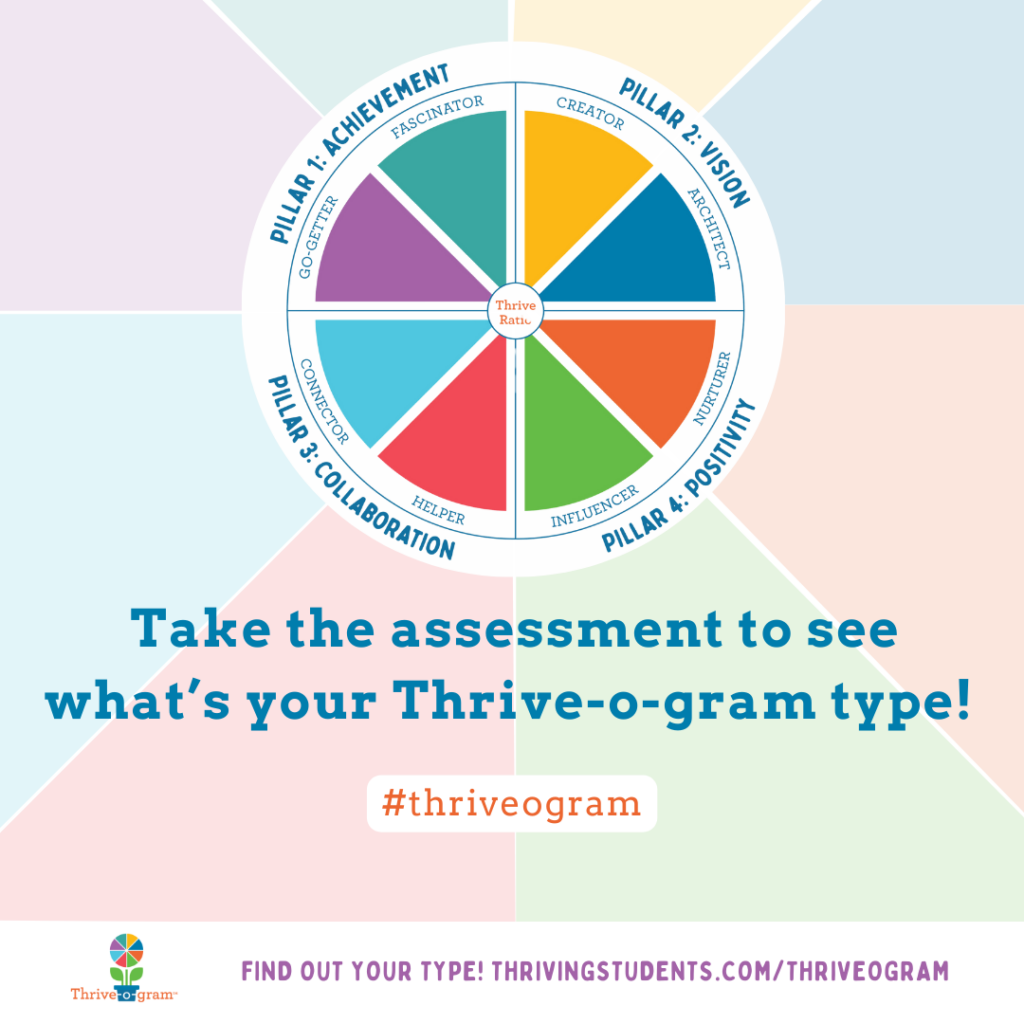
Whether you’re a seasoned teacher looking for a fresh perspective or a new school psychologist or teacher trying to navigate your role to be more proactive and protect yourself from burnout, the Thrive-o-gram is for you.
It’s for all of us in education who believe that when we thrive, our students thrive too.
***
A note from the author: Special thanks to Dr. Byron McClure and Dr. Kelsie Reed, authors of Hacking Deficit Thinking, for being incredible collaborators in developing the Thriveogram Assessment! Thanks to Angela Watson, my “How to Reverse Educator Burnout” masterclass co-contributor as well, for sharing your wisdom with our members in the Thriving Students Collective!

